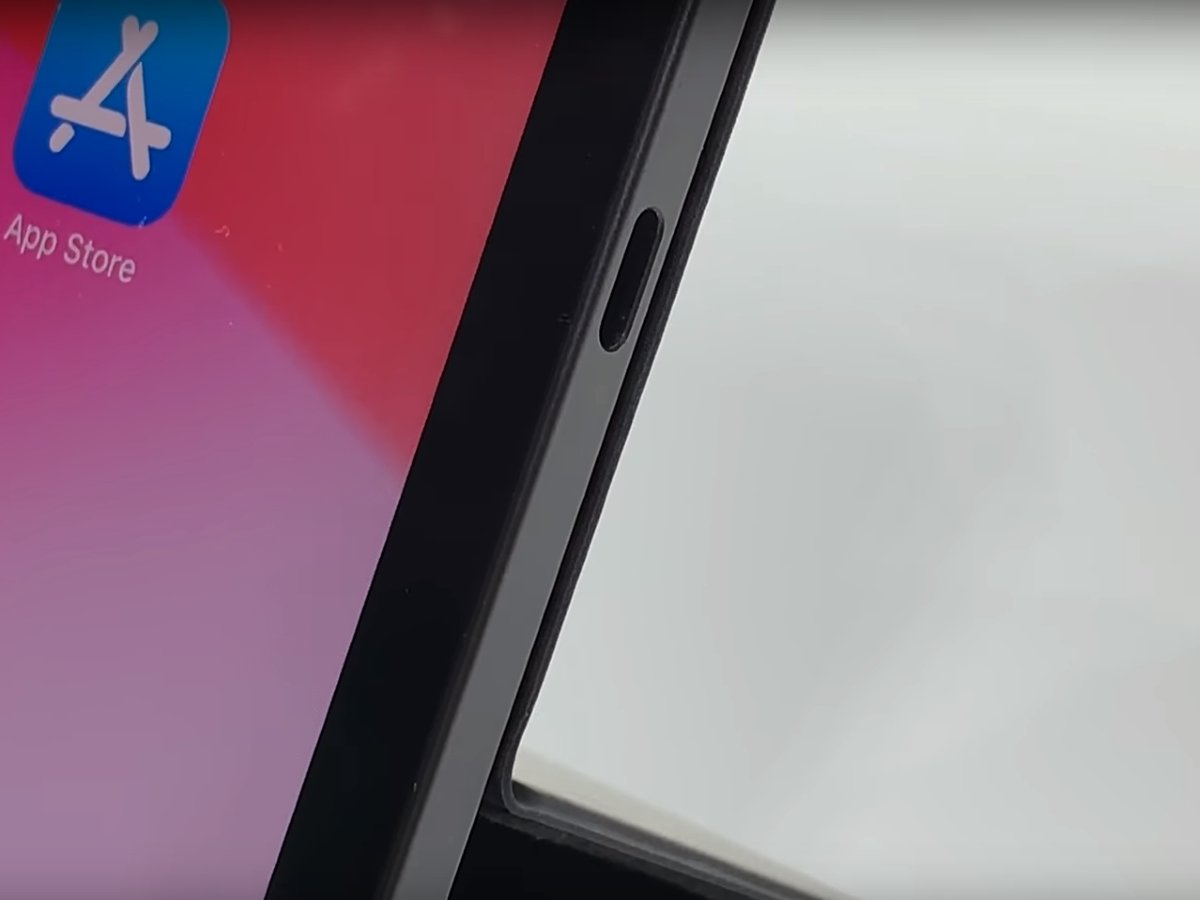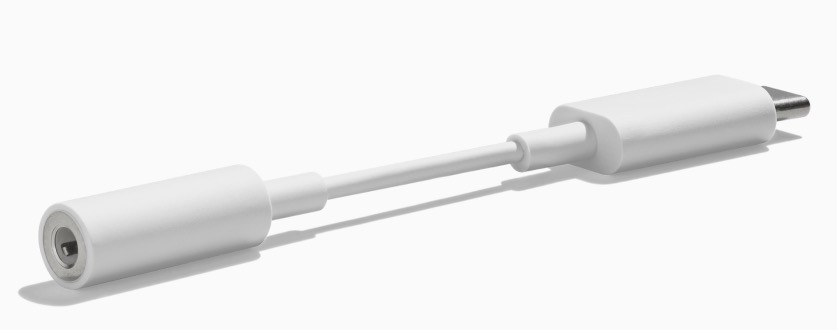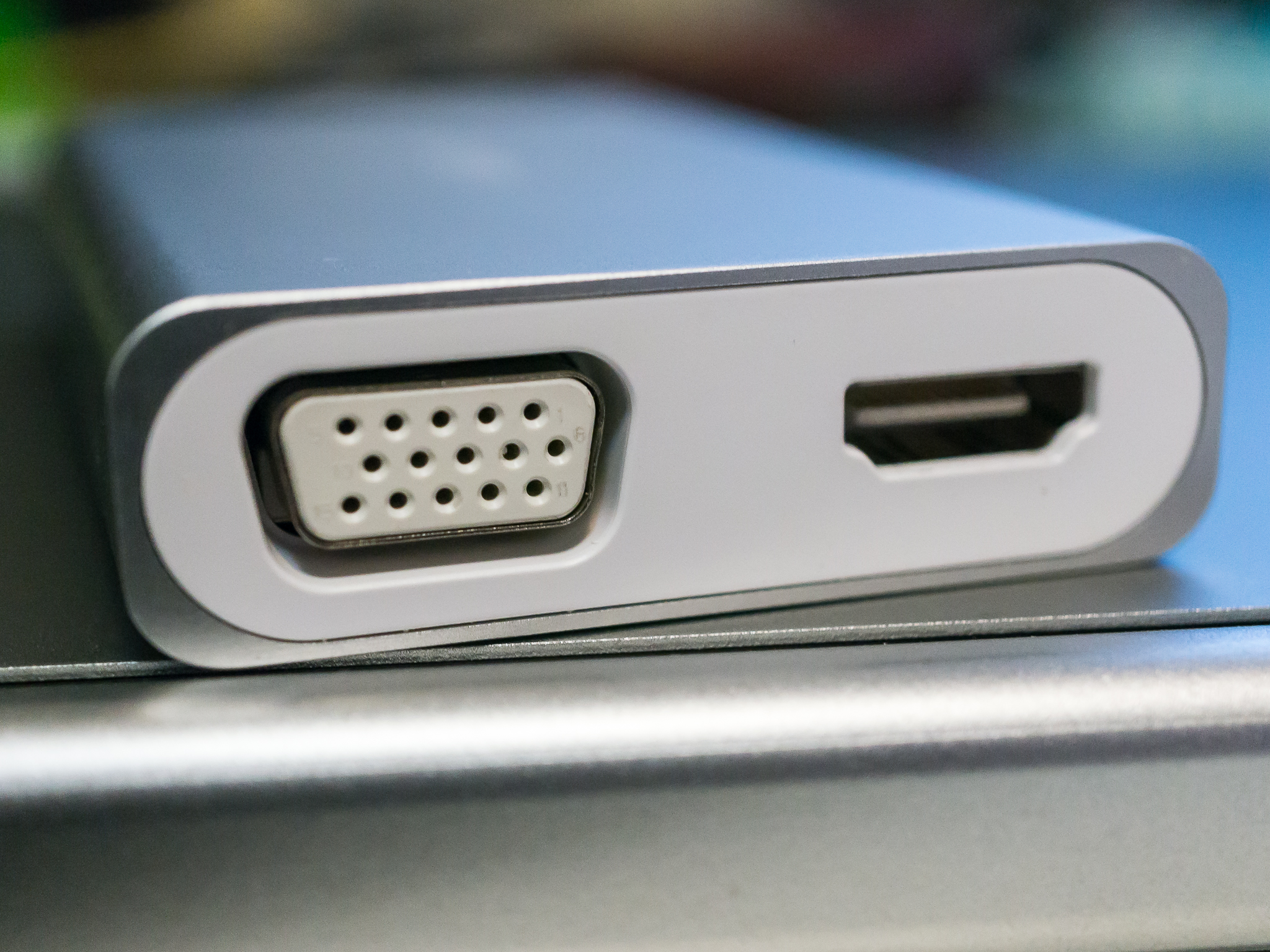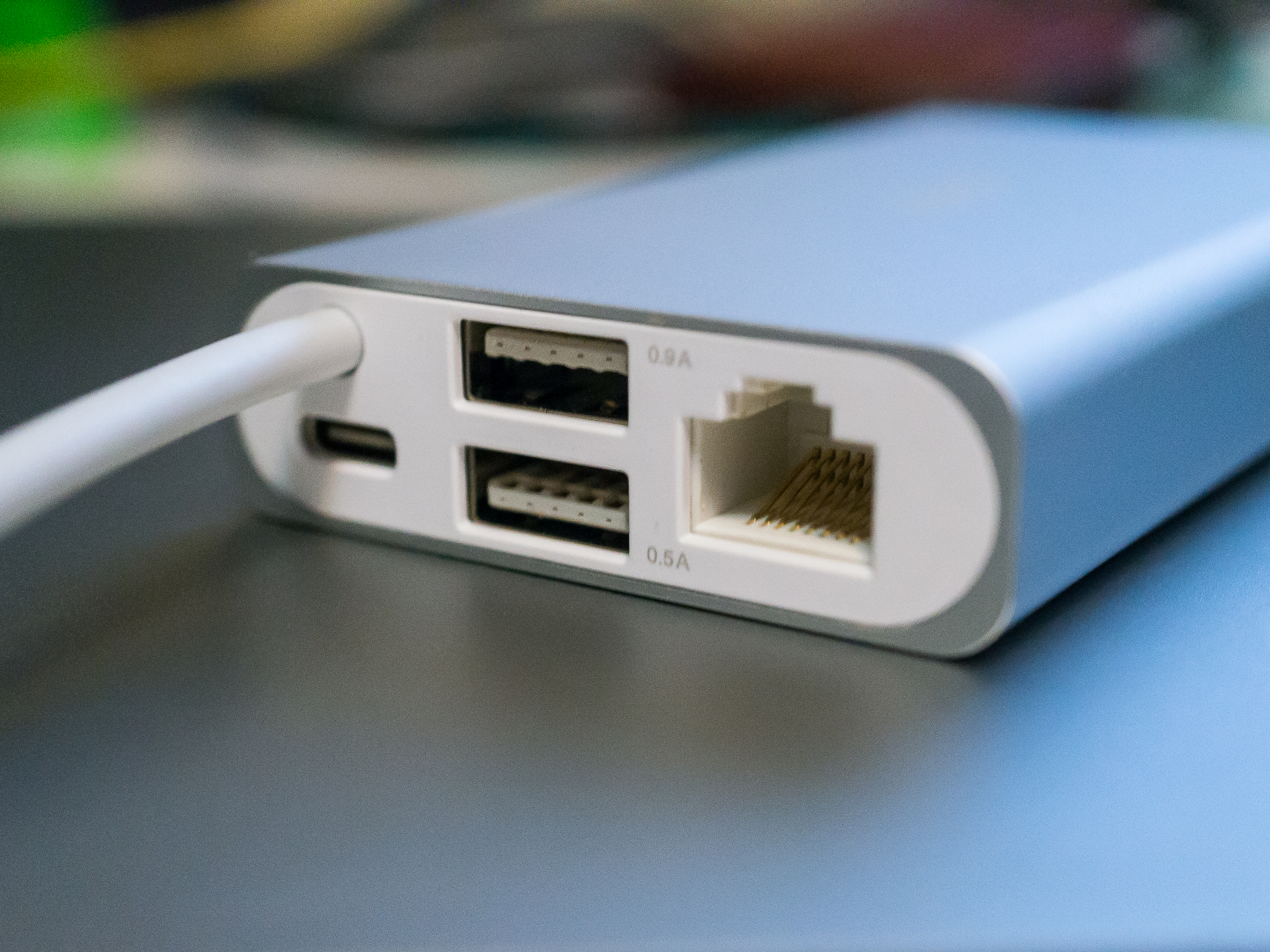USB-C audio and the iPad Pro: Everything you need to know

Apple ditched the 3.5mm headphone jack on the iPhone long ago and for years we heard (often literally!) how and why the Lightning port was a better way to plug in your headphones. Now that the 2018 iPad Pro is making the switch to USB-C you might be wondering why Apple did it and what, if any, difference it will make when it comes to how your music, videos, Facetime calls and everything else will sound. We'll talk about how digital audio works, but the good news is that everything will sound at least as good as it does now, and there is the potential for things to get better when it comes to wired audio.
If you're into electronics and love getting down and dirty, know that the iPad Pro (both sizes) uses USB 3.1 (Generation 2) for data communication and an industry standard Type-C interface. That means 10Gbps communication speeds, is 100w bi-directional USB-PD (Power Delivery) capable and uses the USB Audio version 3.0 specification. For the rest of us here's what that means.
New port, same parts

Audio files that can be played on the 2018 iPad Pro (or any digital music playing device for that matter) needs to have a handful of specific parts to work. Moving from a Lightning port to a USB-C port doesn't change that. You need a way to turn bits and bytes into sounds that our ears can hear.
To do that, you need a DAC (Digital to Analog Converter), an amplifier, and a speaker(s). Speakers work by moving and creating a pressure wave that our eardrums pick up, and the moving parts inside them use electromagnetism to do their thing. That pressure wave corresponds with what's called an analog signal and the variation of that signal is what creates different tones and sounds. In a nutshell, the signal waveform is what a speaker uses to vibrate, that vibration sends pressure waves to our eardrums, and they vibrate in time inside our head to make the sound. Biological magic aside, it really is that simple. If you look at an analog audio waveform and hear the sound, you can see how things line up with higher volume sounds having a bigger impact in the waveform.
Making a copy of a copy of the original audio is complicated and needs the right parts.
Files stored on your iPad Pro or streamed through the internet are digital. That means they are a bunch of binary (a counting system that only uses zero and one) bits that are packed together so the iPad or any other device that can store digital music) can read them and know what to do with them. Digital files do not have any type of waveform that a speaker can use to create sound. We need something to convert them.
Complex algorithms are able to take recorded audio, which is in an analog format, convert it to a digital format like a .mp3 or lossless file for storing, and convert it back to an analog waveform when played. This data is sent through a DAC for conversion and then sent through an amplifier so that the waveform is made strong enough for headphones to be able to use. There are some pretty cool things that scientists and engineers can do to "make" sound, but every portable digital audio player and every set of speakers need this process.
More: Does my phone have a DAC? Explaining DACs and Amps in smartphones today at Android Central
iMore offers spot-on advice and guidance from our team of experts, with decades of Apple device experience to lean on. Learn more with iMore!
Some products use a very good DAC and a very good amp that can drive very good (read: crazy expensive) headphones. The DAC is capable of converting high-resolution audio, the amp can boost the signal considerably more without distortion, and the interface — usually a 3.5mm or quarter-inch stereo plug adapter — sends it out to whatever you have plugged in. This is exactly the same process as a device that doesn't promise an expensive audiophile experience. Only the complexity of the DAC and output quality of the amplifier are different, and a standard stereo plug interface is used because that's what companies put on a pair of headphones that can handle a high-gain, high-power amplified signal. For now.
A little more legroom

All of this matters because a USB-C port is capable of streaming that raw digital data out to another device for decoding, conversion, and amplification. And it can do it while other pins in the connector are sending 4K video out, or receiving power to charge the battery, or sending power out to charge another device, or even be ready to do a thing that hasn't been invented yet.
For an explanation, let's turn to Bluetooth. You don't need to physically connect Bluetooth headphones to anything, but they are using the same parts. Your Bluetooth headphones have their own onboard DAC and amplifier. The digital file is streamed from your iPad or iPhone and all the conversion is done on top of your head. At first, this can feel a little complicated but it's not really. The same process is used and the only difference is where the components are. The Lightning port could send raw digital data, but not in tandem with another process and at half the speed.
There are two ways to send audio data through the USB-C port, and I'll bet you can guess them: Analog and digital. Analog audio can be converted with an onboard DAC and amplifier inside the iPad Pro then sent out through the port to a passive set of headphones or an adapter. For this to work, the iPad is using what's called "audio accessory mode" and the headphones or adapter are just "dumb" connections that pass along the signal like the old 3.5mm sets did.
If you are using an active set of headphones or adapter, your iPad will know and send digital audio out through the port. That means the DAC and amplifier are inside of the headphones or a dongle, and the conversion is done there instead of inside the iPad.
Buying USB-C headphones will get better now that Apple has entered the ring.
This can get messy. In the Android world, some manufacturers don't implement audio accessory mode so you can't use passive headphones with those models. That can make buying headphones an adventure, and not the fun kind with pirates and fancy clothing. In the Apple world, you need to know about Thunderbolt.
The USB-C ports on the MacBook are also Thunderbolt 3 ports, but the USB -C port on the iPad Pro is just a USB-C port. Intel developed Thunderbolt 3 to use the exact same physical specifications as USB-C at the connector, so every Thunderbolt 3 input port is also a USB-C port. The opposite is not true.
This means something like LG's 5K UltraFine displays can be plugged into the iPad Pro, but there's no telling how well it will work or if it will even work at all since it's using the Thunderbolt 3 interface. But any 4K display that accepts a standard HDMI input will work (through the proper adapter) because USB-C sends out 4K digital video if a proper display is detected. This won't make much difference for audio devices unless you look past headphones and towards things like audio interfaces for recording or production. In fact, an iPad with a standard USB-C audio port will make things better because companies will be in a mad rush to make USB-C headphones that don't need to pay the licensing fees Lightning required.
One more thing: Not all active USB audio products will work, and that's for two reasons. First is that Apple can restrict what data is sent through the port, as it does for external file storage. The second is because manufacturers are able to use several new wires in the USB-C connection for extra features. We saw HTC and JVC do this for ANC with a great pair of earbuds (that only worked on one phone 🙁).
Before you buy any USB-C audio device, find out if it works with the iPad Pro. This will be printed on the box, but if you don't see it there be sure to ask someone who knows or is able to refund your money if they give the wrong answer.
Is USB-C audio better?
Yes, but also no. The actual sound isn't better just because the port has changed. As mentioned above, you still need to use the same components and manufacturers are free to choose from high-end gear or budget gear. USB-C doesn't make anything better here, it just changes the connection.
But there are some benefits. The USB Type-C Specification was released by the USB-IF (USB Implementers Forum) in 2014 along with the USB 3.1 specification. While not required, USB-C has plenty of tricks up its sleeve for the way it can communicate and connect. A USB-C port can support these things simultaneously:
- Audio accessory mode For passive audio or passthrough audio.
- Alternate mode This uses some of the wires in the USB connection for direct device-to-host transmission of alternate data protocols; as of 2016 this includes DisplayPort, Mobile High-Definition Link, and HDMI.
- Billboard Device Class This communicates to supply details of Alternate mode connections or to simply provide information about the connection or the device connected at either end.
- Audio Device Class 3 specification This sends analog or digital (or both) audio data through the port.
- USB Power Delivery This not only provides "fast charging" over USB, but it also supports DRP (Dual Role Power) to fast charge your phone and supply power to a connected device at the same time.
The USB Type-C specification doesn't require these things, but they are supported. That means you can do a lot more with the USB-C port on your iPad Pro than listen to music or charge it if Apple and the company making whatever is being plugged in decides to include any of these extra modes. Some are great — HDMI or DisplayPort through the Alternate mode specification means you can connect your iPad Pro to a monitor or to an AV Receiver for premium sound while you mirror the screen. And charge it, and send data or charge another USB-C accessory with the right cable all at the same time.
The two pictures above are of a small USB-C dock made by Aukey that I use with my Pixelbook. I can send video out through an HDMI or VGA interface, charge my Pixelbook through a USB-C port, send power out through two USB-A ports, and use an Ethernet connection. I can do this all from a relatively cheap block of aluminum that no company had to certify because it leverages these USB-C interface specifications. As long as Apple supports the same, I could plug it into an iPad Pro with the same results.
Android, along with Chrome OS, Windows, macOS, and Linux all fully support the USB Type-C connection specifications. Now iOS at least partially supports the USB-C connector specifications.
While the audio won't necessarily sound better because it's using the USB-C port, there are a lot of cool things that can be done while we are listening. We'll know exactly what you can and can't do once our iPad Pros arrive.
Will my old headphones still work?

Some portable electronics will support other connectors for a long time. But sooner or later all things mobile will have made the move to USB-C. It's inevitable because it's a better connector.
If you're old enough to remember the days when your big clunky computer has Serial and Parallel ports on the back, you also remember how much they sucked compared to USB. I remember when my Tangerine iMac came in and had USB ports and all I could find to plug into them were a crummy-sounding pair of speakers. I also remember that I took them out of the box, plugged them in, and they just worked. Portable and mobile devices will make the shift to USB-C so that every part a company sells uses the same connector and can, eventually, work on any device that also uses that connector. Once economics enter the picture, there is no holding back progress.
In the olde days, USB and Tangerine colored iMacs were something new. Those times weren't any simpler, though.
It won't seem like progress if you have a pair of headphones that use a Lightning connector. Apple has USB-C to 3.5mm dongles in the store, we know other manufacturers are champing at the bit to sell you their version, and it will be nice knowing that the USB-C to 3.5mm adapter you buy is going to work even if you didn't buy it from Apple. But so far a Lightning to USB-C audio dongle is nowhere to be found. That doesn't mean they aren't coming, it just means that Apple hasn't said anything and only Apple can make one or license another company to make one.
Of course, wireless headphones will work just like they always have, and the conspiracy theory that Apple wants everyone to buy $159 Airpods is partially true. Apple would love for you to buy Airpods, but what the company envisions is that most people will move to wireless headphones for the convenience, while wired audio will be there for folks who need to use special tools or demand higher-quality music. And Apple has a good track record at this sort of thing lately.
As someone who is primarily an Android user (but I do love my red iPhone 8) seeing an iPad with a USB-C port is awesome because only Apple has the brand power to move an industry. Right now buying USB-C headphones is a mess, and gambling that other USB-C peripherals will work is akin to playing dice behind the schoolhouse. When Apple enters the picture, manufacturers know they can make money if they build products that work exactly as expected. Seeing any company do anything that resembles any sort of a standard will be refreshing.
But please, nobody say Donglegate.
I'm an RHCE and Electrical Engineer who loves gadgets of all kinds. You'll find my writings across Mobile Nations and you can hit me on Twitter if you want to say hey.



